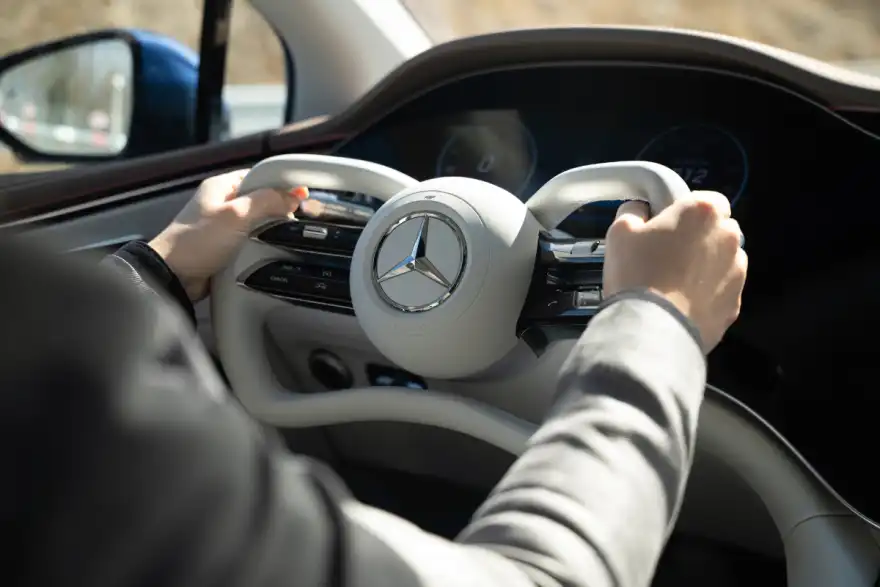
Forget going woke — Mercedes is going yoke. Yep, the luxury carmaker is swapping out its traditional steering wheels for something that looks straight out of a sci-fi film: a half-wheel yoke in its upcoming EQS electric limo.
If that sounds familiar, it’s because Tesla already tried something similar in 2021 with the Model S and X. But it flopped — big time. Users weren’t feeling the whole “grab-and-pray” method of steering at low speeds.
Mercedes thinks it’s cracked the code, though. Unlike Tesla, it’s pairing the funky-looking wheel with a high-tech steer-by-wire system, where turning the yoke doesn’t directly move the wheels — instead, sensors and motors do the job for you. Think of it like the car equivalent of a gaming controller.
And yes, it absolutely looks like something you'd see in Knight Rider or an F1 car. There's no top to it, just a squared-off shape that lets you rest your hands at 9 and 3 o’clock — perfect for cruise mode or taking in a Netflix binge (yep, that’s actually part of the pitch).
How it works: At low speeds (like parking), the system tweaks how much the wheels turn so you only need to move the yoke a little. No frantic spinning required. At high speeds, it dials things back for smoother, more controlled steering.

Tesla didn’t do this with its original yoke — it kept a fixed steering ratio, which made tight turns a nightmare. Mercedes learned from that and promises a smoother ride and better screen visibility.
Is it safe?
That’s the big question. Skeptics worry about electronics failing, especially when there’s no physical link to the wheels. Mercedes says it’s ready for that — its setup has redundant backup systems, double the sensors, and clever tech like rear-axle steering and braking to keep you in control even if things go sideways.
Oh, and this ties into self-driving too. The new yoke is part of Mercedes’ move toward Level 3 autonomous driving — where the car can handle things like stop-and-go traffic while you sit back (but still be ready to take over if needed).
When can you try it?
The tech is launching with the updated EQS in 2026. The current EQS starts at just under £100k, but expect this version with the fancy yoke and steer-by-wire setup to push past six figures.
So, ready to swap your wheel for something that feels more like flying a spaceship?




